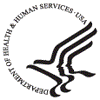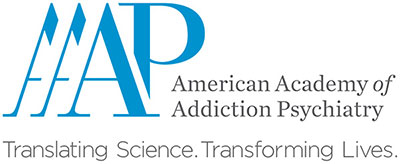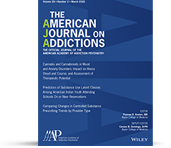
U.S. Department of Health and Human Services
Read Press Release on HHS >
Continuing to build on unprecedented action to expand access to substance use disorder treatment, the Biden-Harris Administration finalizes historic updates to decades-old federal regulations for opioid treatment programs. HHS also announces certain grant funds may be used to purchase xylazine test strips to detect dangerous substance in illicit drug supply.
Today, the U.S. Department of Health and Human Services (HHS) marked two years of its Overdose Prevention Strategy (Strategy) by announcing bold new actions to combat overdoses. These actions include finalizing a rule that will dramatically expand access to life-saving medications for opioid use disorder, announcing that certain grant funds may now be used to purchase xylazine test strips (XTS), and releasing the Substance Abuse and Mental Health Services Administration’s (SAMHSA) updated Overdose Prevention and Response Toolkit. Actions announced today build on President Biden’s National Drug Control Strategy and his Unity Agenda call-to-action to address the overdose epidemic and save lives.
“Drug overdoses reach every corner of our society, taking lives and causing immeasurable pain to families and communities. That’s exactly why President Biden made it a key priority of his Unity Agenda. We have made important progress, but there is still a lot of work to do. But we have the tools, evidence-based strategies, and shared commitment across our nation to take on the overdose epidemic,” said HHS Secretary Xavier Becerra, who on Wednesday heard stories from several young people impacted by substance use illustrating the significance of these actions for people across the nation. “HHS is focused on the full range of solutions needed to address substance use. We will continue to use every lever available to tackle this and save lives. That includes a focus on prevention, as well as expanding treatment and engagement with those struggling with substance use disorder. The Biden-Harris Administration will not rest until we have beaten the overdose epidemic.”
Since the launch of HHS’ Overdose Prevention Strategy in 2021, the Biden-Harris Administration has continued to dramatically increase the nation’s treatment and harm reduction capacity. An average of 37,000 new patients per month are now seeking buprenorphine treatment, resulting in a total of approximately 862,000 people receiving treatment each month. Access to naloxone has increased, evidenced by an almost 40% rise in naloxone units sold between October 2022 and September 2023 compared to the corresponding period in 2020-2021. This progress is driven by the Administration’s historic investments in all four of the Strategy’s pillars – primary prevention, evidence-based treatment, harm reduction, and recovery support services. Last year, President Biden invested nearly $8 billion to support the HHS programs implementing the Strategy and bolstering the nation’s behavioral health infrastructure.
“At HHS, we believe there should be no wrong door for people who are seeking support and care to manage their behavioral health challenges, including when it comes to getting treatment for substance use disorder. The easier we make it for people to access the treatments they need, the more lives we can save,” said HHS Deputy Secretary Andrea Palm, who visited an Opioid Treatment Program (OTP) site in Philadelphia yesterday . “With these announcements, we are dramatically expanding access to life-saving medications and continuing our efforts to meet people where they are in their recovery journeys. The Biden-Harris Administration continues to take action to lower barriers to treatment and increase support for individuals and communities affected by opioids.”
Additional details about each of today’s announcements are below:
HHS Updates Opioid Treatment Program Regulations for First Time in 20 Years
HHS, through SAMHSA, published a final rule to comprehensively update regulations governing Opioid Treatment Programs (OTPs), the only programs where people can access methadone treatment for opioid use disorder. The final rule seeks to dramatically expand access to life-saving medications for opioid use disorder (MOUD) and to reduce stigma. Today’s updates are the first substantial changes to these regulations in more than two decades.
“This final rule represents a historic modernization of OTP regulations to help connect more Americans with effective treatment for opioid use disorders,” said Miriam E. Delphin-Rittmon, Ph.D., the HHS Assistant Secretary for Mental Health and Substance Use, and the leader of SAMHSA. “While this rule change will help anyone needing treatment, it will be particularly impactful for those in rural areas or with low income for whom reliable transportation can be a challenge, if not impossible. In short, this update will help those most in need.”
The final rule incorporates critical feedback submitted by treatment providers, advocates, and patients. Major provisions of the final rule that will expand access to medications for opioid use disorder while ensuring high-quality care include:
- Making permanent COVID-19 era flexibilities that expand eligibility for patients to receive take-home doses of methadone. This will help reduce the burden of transportation for frequent clinic visits. Research has shown that patients receiving take-home doses are more likely to remain in treatment and less likely to use illicit opioids.
- Allowing initiation of treatment via telehealth, including methadone via audio-visual telehealth technology and buprenorphine via audio-only technology, to remove transportation barriers.
- Expanding provider eligibility to allow nurse practitioners and physician assistants to order medications in OTPs, where state law allows, to reduce the burden on OTP operations and increase patient access to medications.
- Breaking down barriers to entry for treatment by removing the stringent admission criteria that had previously required patients to have a history of addiction for a full year before being eligible for treatment. This will help open more doors to treatment for more people when they need it and ensure that everyone can get the care they need.
- Expanding access to interim treatment, allowing patients to initiate medication treatment while awaiting further services to ensure people have access to care as soon as they are ready and reduce the barriers of treatment waitlists.
- Promoting patient-centered models of care that are aligned with management approaches for other chronic conditions.
In addition to reducing barriers to medication, the updated rule also removes stigmatizing and outdated language, and updates definitions to reflect current medical usage. While finalizing more flexible regulations for OTPs, SAMHSA will continue to maintain robust quality standards through accreditation requirements for all programs. The final OTP regulations will be published in the Federal Register on February 2, 2024. Following a 60-day period from the publication date, the new rules will take full effect within six months, providing OTPs with the opportunity to prepare for implementation.
HHS Approves Federal Grant Funds to Purchase Xylazine Test Strips
In addition to updating the OTP regulations for the first time in 20 years, HHS also announced that certain grant funds may be used to purchase xylazine test strips (XTS), consistent with governing statutory authority, and applicable federal, state, and local law, giving grantees access to another tool to prevent overdose and other drug-related harms. Last year, in response to xylazine’s growing role in overdose deaths nationwide, the Biden-Harris Administration used an executive designation authority for the first time in the nation’s history to declare xylazine combined with fentanyl as an emerging threat to the United States. The White House then released a first-of-its-kind National Response Plan to coordinate a whole-of-government response against this threat. Today’s announcement delivers on a key priority of the National Response Plan.
Test strips are a critical harm reduction tool that help prevent drug overdoses and save lives. XTS are small strips that can be placed within a personal sample of drug supply to detect the presence of xylazine. Xylazine is an active ingredient in a non-opioid sedative approved by the Food and Drug Administration for use in animals but is not approved for use in humans. It is increasingly added as an adulterant to the illicit drug supply and is associated with significant and rapidly worsening negative health consequences. XTS can be a useful tool to help people detect and avoid xylazine in illicit drugs and serve as a much-needed addition to the wider array of harm reduction supports and services available to help keep people safe – including fentanyl test strips, which, as HHS announced in 2021, can also be purchased using federal grant funds.
HHS Released Updated Overdose Prevention and Response Toolkit
Finally, earlier this week, Dr. Delphin-Rittmon, Ph.D. announced the release of the agency’s updated Overdose Prevention and Response Toolkit. The toolkit provides updated guidance on preventing overdoses, responding to stimulant or opioid overdoses, and offers population-specific guidance for a range of audiences.
The toolkit, designed to augment overdose prevention and reversal training, provides guidance on the role of opioid overdose reversal medications (including naloxone and nalmefene), and how to respond to an overdose. It also contains appendices for specific audiences, including people who use drugs, people who take prescription opioids, first responders, healthcare practitioners, and others.
For more information on the Overdose Prevention Strategy, visit: www.hhs.gov/overdose-prevention/. Read the list of 2023 accomplishments here: [https://www.hhs.gov/about/news/2024/02/01/biden-harris-administration-marks-two-years-advancements-hhs-overdose-prevention-strategy-new-actions-treat-addiction-save-lives.html]. Read the full fact sheet here: [https://www.hhs.gov/about/news/2024/02/01/fact-sheet-hhs-announces-new-data-showing-nation-has-expanded-its-ability-treat-addiction-save-lives.html].



